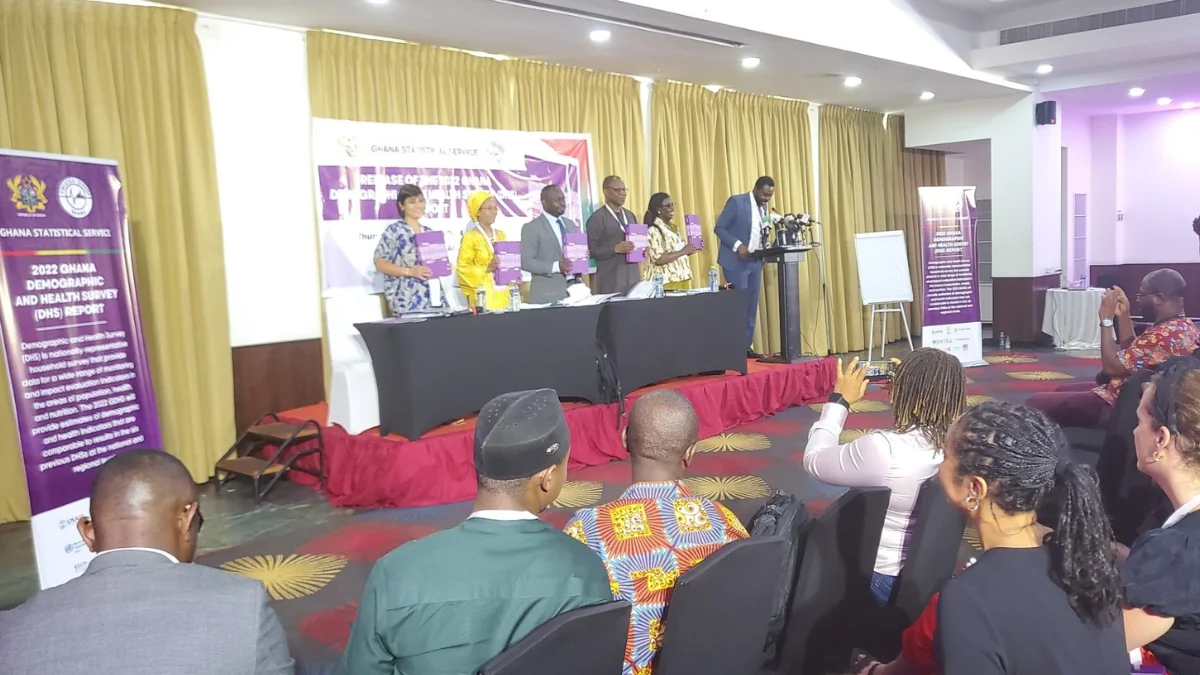A recent study by the Ghana Statistical Service has shown a notable decrease in the country's fertility rate, dropping from 6.4 children per woman in 1988 to 3.9 in 2022.
Regional variations were observed, with the North East Region having the highest fertility rate of 6.6 children per woman, while Greater Accra recorded the lowest at 2.9.
Government Statistician, Professor Samuel Annim, unveiled these findings during the release of the 2022 Demographic and Health Survey, the seventh of its kind since 1988.
Prof. Annim highlighted the significance of the survey in monitoring Ghana's population and health situation.
The survey also addressed drinking water access, revealing that 84% of households in Ghana have access to at least basic drinking water services. Urban households outpaced rural ones, with 95% compared to 72%, respectively.
Regional discrepancies were noted, with the Northern region having the lowest access at 68%, while the Upper East and Ashanti regions recorded the highest at 86%.
In terms of menstrual hygiene, the study indicated that 88% of women aged 15 to 49 used disposable sanitary pads, nine percent used cloth, and two percent used reusable sanitary pads.
Sanitation was another focal point, with 24% of Ghanaians having access to at least basic sanitation services.
The survey identified regional variations, showing the Northern region at the lowest with 68% and the Upper East and Ashanti regions at the highest with 86%.
Teenage pregnancy rates were reported, with Savannah Region recording six percent of young women. The survey indicated that 15% of adolescent women aged 15 to 19 have ever been pregnant.
On the health front, the neonatal mortality rate was reported as 17 deaths per 1,000 live births.
The under-five mortality rate has seen a decline from 155 deaths per 1,000 live births in 1988 to the current rate of 40 deaths per 1,000 births.
For malaria prevalence, nine percent of the population aged 6 to 59 tested positive for malaria by microscopy, and 17 percent by RDT.
The comprehensive survey, funded by various organizations including USAID, UNICEF, and the World Bank, interviewed a nationally representative sample of 15,014 women aged 15 to 49 and 7,044 men aged 15 to 49.
The high response rates of 98% for women and 97% for men underscore the reliability of the survey.









